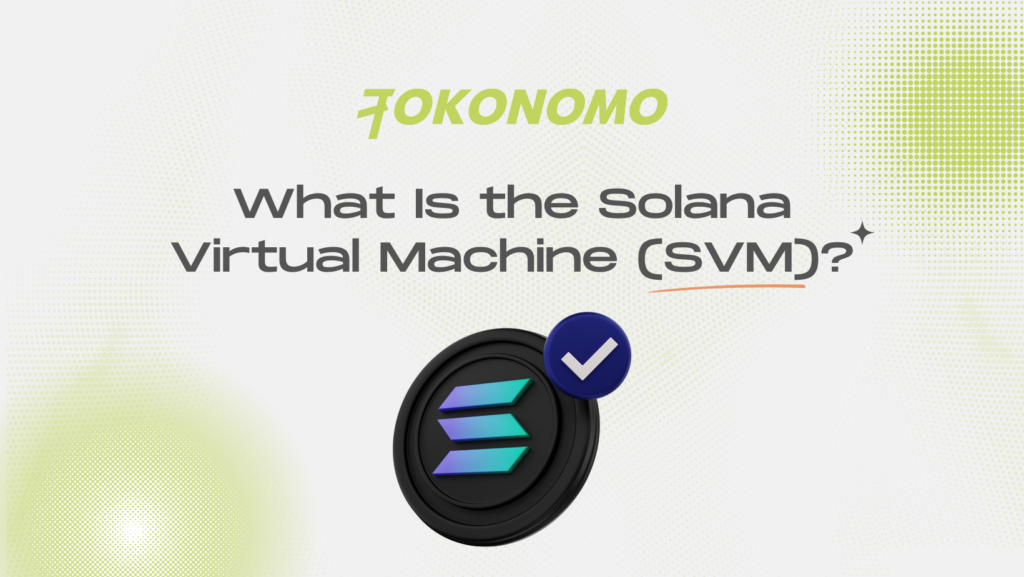Initially, blockchains were predominantly utilized as decentralized networks dedicated to processing transactions. Over time, virtual machines have revolutionized the landscape, enabling the development of smart contracts on top of these blockchains. This evolution has transformed blockchains into foundational layers supporting many use cases and applications. Notable examples include the Ethereum Virtual Machine (EVM) and the Solana Virtual Machine (SVM), which have played key roles in this shift. In this article, we will delve into the SVM, examine how it operates, and explore the key differences between the SVM and EVM.
What Is the Solana Virtual Machine (SVM)?
The Solana Virtual Machine (SVM) serves as the execution environment for smart contracts on the Solana blockchain, offering a highly efficient platform capable of processing thousands of transactions per second (TPS). This remarkable throughput significantly enhances the scalability of the Solana network, making it an attractive option for decentralized applications and financial systems.


Ethereum pioneered the concept of a blockchain virtual machine with the creation of the Ethereum Virtual Machine (EVM), which has since become the industry standard. The EVM’s architecture has been so influential that several other blockchains, including BNB Smart Chain, Avalanche, and Tron, have developed systems either forked from or fully compatible with the EVM. In this evolving landscape, the Solana Virtual Machine has emerged as a formidable competitor, challenging the dominance of the EVM with its cutting-edge performance and capabilities.
How Does the Solana Virtual Machine Operate?
The Solana Virtual Machine (SVM) functions as a robust and powerful computational engine that operates within the Solana blockchain, managing smart contracts initiated by users. The working mechanisms of the SVM can be broken down into several key steps:
- Validator Nodes: The Solana network is supported by numerous validator nodes distributed across the globe. Each of these nodes operates its version of the SVM, enabling them to handle distinct tasks independently from one another.
- Preparing Smart Contracts: Before executing a smart contract, the SVM translates it into a machine-readable format that the validator node can process. This step ensures that the smart contract will be executed accurately and without errors.
- Executing Smart Contracts: Once the smart contract is prepared in the appropriate format, the SVM executes it. The smart contract then modifies relevant blockchain data on the node’s version of the SVM that is executing the contract.
- Reaching Consensus: After the contract execution updates the blockchain data, the changes are shared across the network of validator nodes to reach consensus. This ensures that the blockchain remains consistent and up-to-date across all nodes.
To illustrate this, imagine a user engaging with a decentralized application (DApp) on Solana to buy and sell digital art. When the user purchases a piece of art, a smart contract is triggered to update the ownership record on the blockchain. The SVM on one of the validator nodes processes this smart contract, verifying the transaction details, ensuring the payment is legitimate, and updating the blockchain to reflect the new ownership.
Parallel Execution With SeaLevel
One of the most notable characteristics of the Solana Virtual Machine (SVM) is its remarkable capability to manage numerous smart contracts simultaneously. This impressive feat is accomplished through the innovative method of parallel transaction processing. In essence, the SVM executes multiple smart contracts concurrently, significantly boosting both transaction throughput and overall efficiency.


A key component of the SVM is SeaLevel, which specifically addresses the potential conflicts that may arise during parallel execution when multiple transactions are trying to modify the same account state at the same time. For example, if two transactions—one that adds funds to a wallet and another that withdraws funds—are executed at the same moment, this could lead to computational errors if not handled properly.
SeaLevel is meticulously designed to explicitly manage the dependencies that exist between transactions. Smart contracts on the Solana blockchain specify which sections of the blockchain’s state each transaction intends to alter. This design enables the system to effectively identify which transactions can be executed independently (those that affect different parts of the state) and which are dependent (those that impact the same part of the state). To prevent any conflicts and ensure the integrity of each transaction, dependent transactions are processed in a sequential order. This careful management guarantees that every transaction is executed accurately, safeguarding both data integrity and the overall performance of the blockchain.
SVM vs. EVM
Model for processing transactions
The SVM utilizes a parallel processing model, which enables the execution of multiple transactions at the same time. This capability significantly enhances overall throughput and reduces latency, leading to more efficient performance. In contrast, the EVM operates by sequentially processing transactions. This approach can result in potential congestion and delays during times of high network activity, impacting the speed and efficiency of transaction processing.
Programming language
The SVM (Solana Virtual Machine) offers robust support for Rust, a programming language renowned for its exceptional efficiency. Rust is particularly well-suited for applications that demand high performance and stringent security measures. In contrast, the EVM (Ethereum Virtual Machine) utilizes Solidity, a specialized language crafted specifically for the development of smart contracts.
Deployment and execution of smart contracts
Smart contracts on the SVM (Solana Virtual Machine) are executed independently by each validator, enhancing network operations’ overall efficiency. This decentralized execution model allows for faster processing since validators can operate concurrently without waiting for consensus. In contrast, the EVM (Ethereum Virtual Machine) mandates that all nodes achieve a consensus regarding the results of smart contract executions. This requirement can lead to slower processing times, as the need for unanimous agreement among all nodes introduces delays in the execution process.
Obstacles Faced by the SVM
The SVM encounters a range of challenges that impact its functionality and effectiveness. A significant hurdle is the intricate task of maintaining both system stability and security within a parallel processing environment. Although this architecture is highly efficient, it necessitates a greater level of coordination to avoid potential conflicts and to guarantee the integrity of the system when transactions that influence the same data are executed concurrently.


Moreover, the Rust programming language poses a more challenging learning curve for aspiring blockchain developers compared to Solidity and other languages commonly utilized in blockchain development. This increased difficulty can deter new developers from fully engaging with the SVM, limiting the overall growth and innovation within the ecosystem.
Conclusion
The Solana Virtual Machine (SVM) serves as a highly efficient execution environment within the Solana blockchain ecosystem, specifically designed to optimize transaction processing and facilitate the execution of smart contracts. By leveraging the power of parallel transaction processing alongside the Rust programming language, the SVM can achieve significantly higher transaction throughput, ultimately enhancing its scalability. However, the SVM does encounter specific challenges, including the steep learning curve associated with mastering the Rust programming language and the inherent limitations posed by the parallel execution model. Despite these challenges, the SVM’s potential integration with emerging artificial intelligence technologies holds great promise for boosting its usage and adoption in the future, making it an exciting area to watch in the blockchain landscape.











